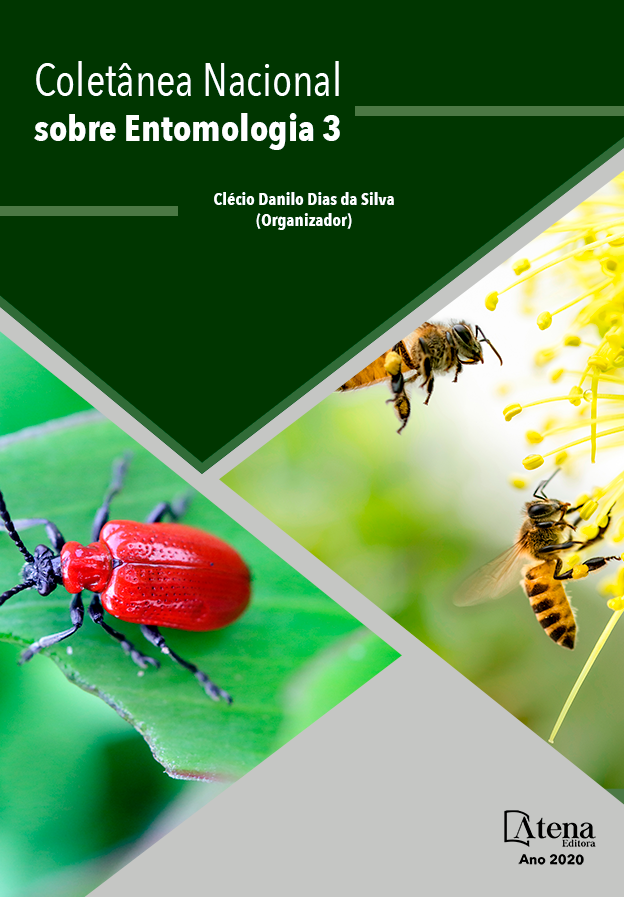
Predação de cupins por formigas em Fragmento Florestal em Belém, Pará, Brasil
Dentre os invertebrados de solo, formigas e cupins destacam-se como um dos grupos mais abundantes nas florestas amazônicas. Pelo sucesso populacional que esses insetos alcançaram, desempenham papel fundamental na dinâmica de diversos ecossistemas na região. As formigas apresentam relações com vegetais e invertebrados, destacando a predação. O objetivo do trabalho foi averiguar se existe diferença significativa na predação de cupins por formigas em dois diferentes habitats (terra firme e igapó) e quais os gêneros de formigas predadoras. O estudo foi desenvolvido na Reserva do Mocambo, pertencente a Área de Pesquisa Ecológica do Guamá (APEG), um fragmento de floresta tropical primária de terra firme, em Belém, Pará. O procedimento foi realizado no mês de julho/2015 durante dois dias no horário de 08:00 às 14:00 h. Foram traçados dois transectos um em mata de terra firme e outro nas proximidades do igarapé Catu, distantes entre si cerca de 200m. Em cada transecto foram distribuídas 50 unidades de amostra distanciadas entre si em 5 m. Cada unidade amostral era constituída por um indivíduo de cupim do gênero Nasutitermes, colado no centro de um retângulo de papel branco, depositado ao nível do solo. As observações sobre a presença/ausência de predação foram mensuradas a cada uma hora. Os dados obtidos foram analisados por X2. Em terra firme foram capturados 34 cupins e 19 no igapó. Os gêneros de formigas predadoras foram Pheidole, Strumigenys e Solenopsis. A predação foi maior na primeira hora. O resultado do X2 foi igual a 4,246 e mostrou que a diferença de predação entre terra firme e igapó foi significativa. Vários fatores podem influenciar essa diferença, por exemplo, o teor de água no solo, o tipo de solo, a quantidade de folhiço, a estação do ano, que podem gerar uma maior ou menor abundância de invertebrados, de modo geral nos predadores e no horário de atividade de forrageio.
Predação de cupins por formigas em Fragmento Florestal em Belém, Pará, Brasil
-
DOI: 10.22533/at.ed.39920011017
-
Palavras-chave: predação, formigas, cupins
-
Keywords: predation, ants, termites
-
Abstract:
Among the soil invertebrates, ants and termites are distinguished in being one of the most abundant groups in amazon forests. As a result of their population success, they perform an essential role in the dynamics of many ecosystems in the region. Ants have roles with vegetation and insects, especially predation. The objective of this work was to ascertain if there is any significant difference in the predation of termites by ants in two different habitats (mainland and igapó) and what are the genera of the predatory ants. The study was undertaken in the Mocambo Reservation, belonging to the Area of Ecological Research of Guamá (APEG), a fragment of primary mainland tropical forest, in Belém, Pará. The procedure was performed in the month of July/2015 in two days, between 8 a.m. and 2 p.m. Two transects were traced, one in mainland forest and other near the Catu igarapé, in a distance of about 200m of one another. In each transect were distributed 50 sampling units distanced 5m of each other. Each sampling unit was made of a termite of the Nasutitermes genus, glued to the center of a white paper rectangle, resting in ground level. Observations about the presence/absence of predation were measured in one hour intervals. The data obtained was analyzed in X2 .In the mainland, 34 termites were captured and 19 were captured in the igapó. The genera of predatory ants were Pheidole, Strumigenys and Solenopsis. The predation was higher in the first hour. The X2 result was 4,246 and showed that the difference n predation in the mainland against the igapó was significant. Many factors may have influenced this difference, for example, the content of water in the soil, the type of soil, the quantity of leaf litter, the season, all may cause a higher of smaller abundance of invertebrates, in general in predators and in the forage schedule.
-
Número de páginas: 5
- Daniel Gonçalves Jardim
- Higor Jardim Macambira
- Maria Lucia Jardim Macambira


